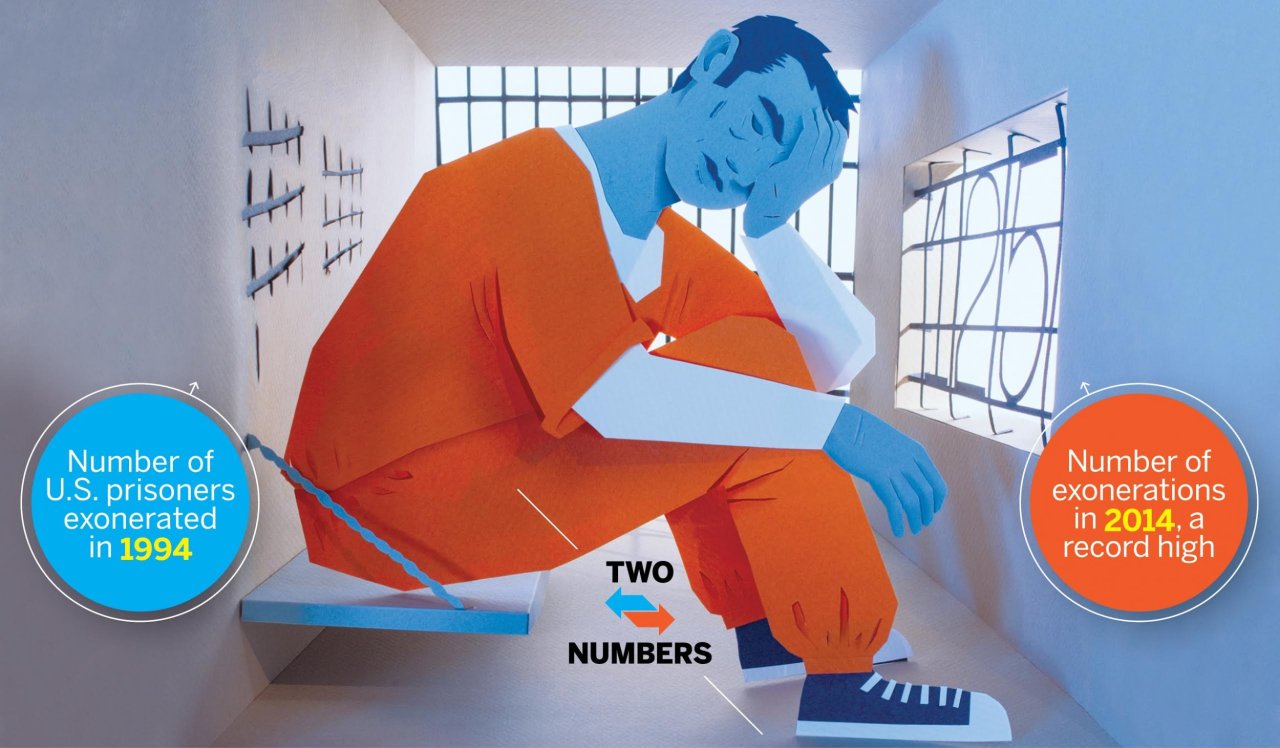In early March, Angel Gonzalez, 41, was exonerated in the abduction and rape of an Illinois woman, for which he had been imprisoned for 20 years. According to the victim's testimony—backed up by DNA samples—two men committed the crime. But new DNA testing in January revealed that Gonzalez did not match either of the two male DNA profiles found.
The proving of Gonzalez's innocence is part of a growing trend: In 2014, a record 125 people convicted of crimes were absolved of wrongdoing nationwide. The preceding two years also saw record highs in the U.S., with 91 exonerations each. For perspective, in 1994, the year of the crime that changed Gonzalez's life, just 31 convictions were reversed.
Most of this is due to recent advancements within the criminal justice system. Reversals in cases like Gonzalez's—where DNA played a central role—have remained steady in the past two decades. "DNA cases depend on a technological change between the time of trial and the time of exoneration," says Samuel Gross, a University of Michigan professor of law and editor of the National Registry of Exonerations. He explains that the majority of recent DNA-based exonerations are for murders carried out before DNA was the standard of proof.
But exonerations that do not rely on DNA have skyrocketed, rising from 22 in 1994 to 103 in 2014. Many of these were drug crimes; in 1994, only three people were found innocent after a drug crime conviction, but by 2014 that number had risen to 39. The spike is partially attributable to 33 Texas cases in which most of those convicted pleaded guilty to drug charges before the alleged drugs had been tested. Severely delayed results later revealed that the items in their possession were not illegal.
The swelling number of exonerations can be attributed to the increase in resources dedicated to investigating possible wrongful convictions, says Gross. The most prominent example is the formation of Conviction Integrity Units (CIUs)—staff within district attorney offices exploring claims of innocence. In 1994, there were no such units. In 2013, nine CIUs were responsible for 8 percent of the exonerations. In 2014, the number of CIUs jumped to 15, and they tallied 39 percent of that year's exonerations.
Analysts believe that as CIUs become increasingly successful, government support and funding will increase, ensuring that they become more plentiful. And as they do, the number of people freed from prison will grow.



























